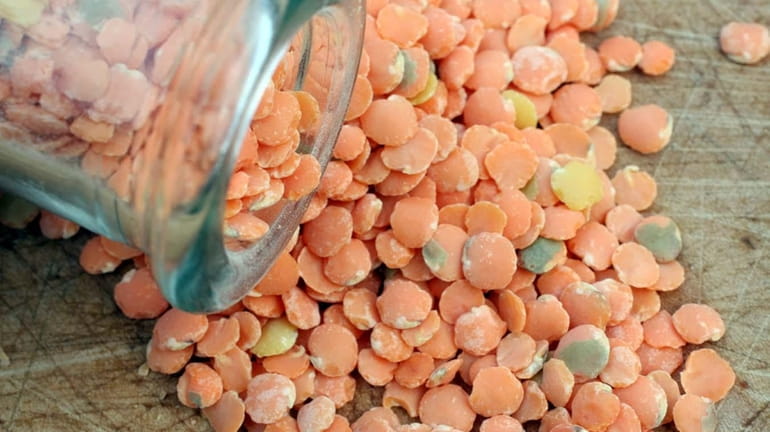Versatile lentils move up the food chain

From restaurant menus to upscale grocery stores, you'll find lentils in a rainbow of colors bearing an atlas of place names. Credit: AP
As culinary fashion continues to wind inexorably lower on the luxury scale -- from tournedos to beef cheeks, from foie gras to pork belly -- it was inevitable that we would eventually come to lentils.
Representing the lowest and plainest possible food denominator since biblical times, when Esau traded his birthright for a bowl of soup made from them, lentils have been regarded as a food you would eat only when you absolutely had to.
Yet look at a restaurant menu today or visit an upscale grocery and you'll find lentils that come in a rainbow of colors and bear an atlas of place names.
You'll find lentils that are reddish pink, canary yellow and pure ivory. Patel Brothers in Hicksville is a good source. Many chefs swear by the dark green lentils from Le Puy in France or tiny tan Castelluccios from Italy's Umbrian hills. You'll even find lentils called beluga, after the ultimate in luxury foods, caviar.
Recently, I spent a day cooking eight varieties of lentils in the same way: I added a half-cup of lentils to 2 cups of water, brought it to a boil and then simmered it, uncovered, until tender. The first thing I learned is that, despite all the different colors, origins and names, there are really two main kinds of lentils: those that are firm when cooked and those that are soft.
Generally speaking, the brightly colored lentils -- canary yellow, bright red, ivory -- are so soft they can almost be pureed with a spoon. These are best used as Indian dal. Setting those softies aside -- the others hold together to use in salads, soups and stews. Among the firm lentils, I found differences mostly in cosmetics: size and color. They all cooked in roughly 20 minutes, and 1/2 cup raw yielded about 1 cup cooked.
The biggest surprise was just how good the plain brown supermarket lentils turned out to be. They were about the same firmness as the far more expensive Du Puys and Pardinas with a more-than-acceptable flavor.
Even the most expensive lentils don't cost that much in the grand scheme of things. It's good to know that lentils are the ultimate in affordable luxury.
